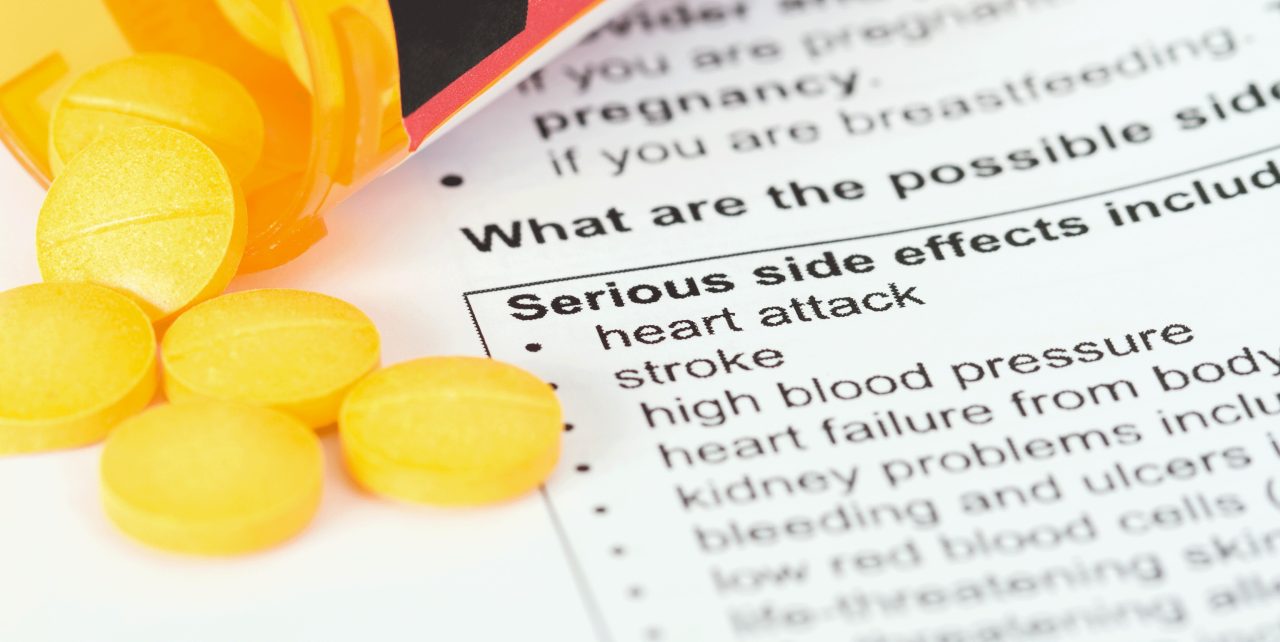Prescription Medicines May Lead to Depression

Prescription medicines may lead to depression. More than a third of American adults may be at risk without realizing it. Here's what you should know.
More than 200 drugs — from birth control pills to antacids — list depression as a possible side effect. Take more than one, as many Americans do, and your risk rises. But even if your mood falls, it may never occur to you that common prescription medicines may be a factor.
"Patients and healthcare providers need to be aware of the risk of depression that comes with all kinds of common prescription drugs — many of which are also available over the counter," said Dima Qato, assistant professor at the University of Illinois College of Pharmacy and lead author of a study published in the prestigious Journal of the American Medical Association.
YOU MIGHT ALSO LIKE: Physical Symptoms of Depression
Researchers examined the medications of more than 26,000 U.S. adults from 2005 to 2014, collected as part of a larger national survey. Many were taking more than one potentially depressive medication. Among those taking three or more of these drugs, 15.3 percent experienced depression at the same time — compared with 4.7 percent for those not using any of the drugs —7 percent if you took just one medication in this group, and 9 percent if you took two.
The study also found an increase in the use of some medications and the number of medications people were taking over time. For example, the percentage of people taking antacids — like omeprazole (Prilosec) or ranitidine (Zantac) — jumped from 5.4 to 9.5 percent.
Some combinations created higher risk. Nearly 16 percent of men who took omeprazole alongside finasteride (Proscar) for an enlarged prostate or hair loss had depression. Among people who took gabapentin (Neurontin) for seizures alongside cyclobenzaprine, a muscle relaxant, nearly 61 percent were depressed.
Since depression can cause symptoms like frequent gas or tight muscles, it might be the case that the depression caused the multiple medication use, rather than the medications causing depression. To test this, researchers took out data from people who were using a psychiatric medication and found the same pattern held.
For prescription drugs with suicide listed as a potential side effect, usage increased from 17 percent to 24 percent, and use of three or more drugs concurrently increased from 2 percent to 3 percent.
"People are not only increasingly using these medicines alone, but are increasingly using them simultaneously, yet very few of these drugs have warning labels," Qato said.
One solution might be updating drug safety software to recognize depression as a potential drug-drug interaction, she said.
If you’re depressed, talk to your doctor but don’t stop taking your medications on your own. Statins, hormones for birth control or postmenopausal symptoms, stimulants for attention problems, and anticholinergic drugs for irritable bowel syndrome all can affect your mood.
Other common drugs that increase depression risk:
- Beta-blockers used to treat high blood pressure, angina, migraines, tremors, irregular heartbeat, and in (as eye drops) some kinds of glaucoma. These drugs typical have names ending with “olol.” Examples include: atenolol (Tenormin), carvedilol (Coreg), metoprolol, propranolol (Inderal), sotalol (Betapace), and timolol (Timoptic). Ask your doctor if you could take a benzothiazepine calcium channel blocker instead.
- Antacids known as proton pump inhibitors (PPI) or H2 blockers, usually prescribed for gastroesophageal reflux disease (GERD). Examples of PPIs: omeprazole (Prilosec) ansoprazole (Prevacid), dexlansoprazole (Dexilent), rabeprazole (Aciphex), pantoprazole (Protonix), esomeprazole (Nexium), esomeprazole magnesium/naproxen (Vimovo), omeprazole/sodium bicarbonate (Zegerid). Examples of H2 blockers: nizatidine (Axid)famotidine (Pepcid),cimetidine (Tagamet) and ranitidine (Zantac). Keep careful records of your diet and symptoms, and see if you can identify the foods that trouble you, perhaps with the help of a nutritionist.
- Corticosteroids used for muscle inflammation, rheumatoid arthritis, lupus, Sjögren's syndrome, and gout. These drugs have names that end with “one,” including cortisone, methylprednisolone, prednisone, and triamcinolone. Acetaminophen (Tylenol), aspirin, or tramadol (Ultram) might work as well.
- Benzodiazepine hypnotics are used for anxiety, insomnia, and tight muscles. Examples include: alprazolam (Xanax), diazepam (Valium), estazolam (ProSom), flurazepam (Dalmane), lorazepam (Ativan), temazepam (Restoril), and triazolam (Halcion). Cognitive behavioral therapy, or simply better sleep hygiene, may work better for insomnia and the anxiety that may result.
- Parkinson's drugs, including levodopa, pramipexole (Mirapex), and ropinorole (Requip), can trigger depression. Make sure you actually have Parkinson’s, which has been overdiagnosed, and ask for other options.
YOU MIGHT ALSO LIKE: How to Prevent Falls — Learn About Drug Side Effects
Updated:
September 10, 2021
Reviewed By:
Janet O’Dell, RN